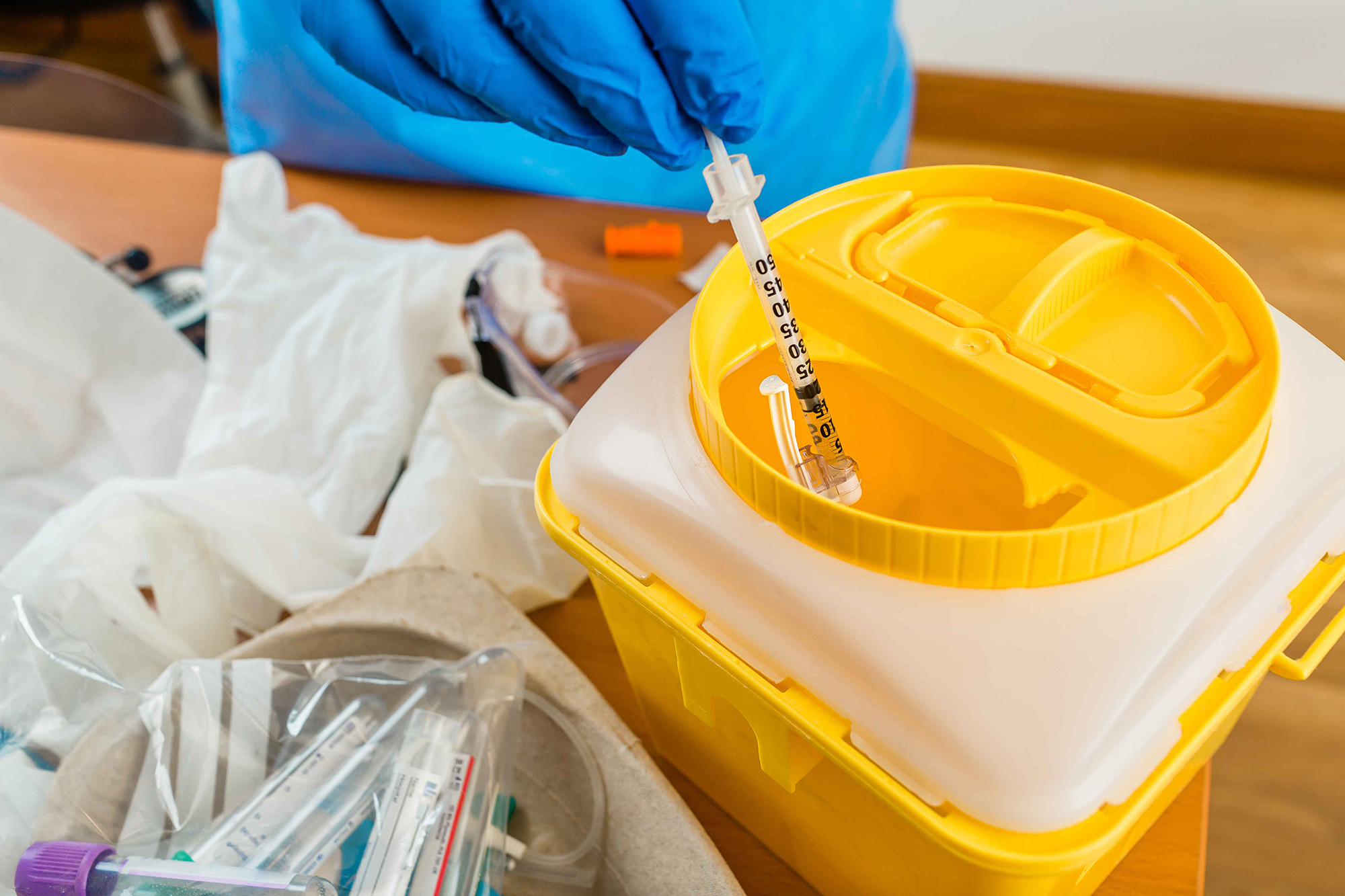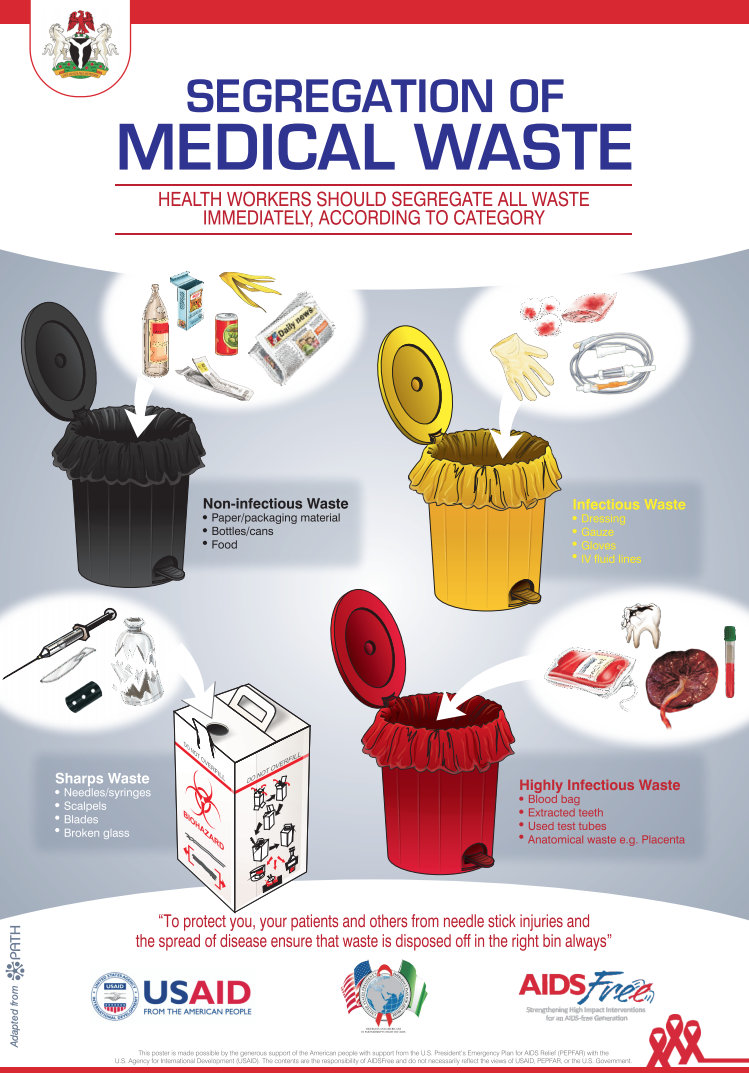Eco-Friendly Solutions for Medical Waste Removal: Focusing On Security and Conformity
Wiki Article
Reliable Techniques of Medical Garbage Disposal
Efficient methods of medical garbage disposal are vital in keeping public health and environmental safety. Medical waste, including sharps, pathological waste, and pharmaceutical waste, have to be taken care of and taken care of correctly to stop the spread of infections and protect the setting. This requires adherence to rigorous laws and the implementation of expert waste administration practices.Correct partition of medical waste, safe and safe storage, effective treatment and disinfection techniques, and environmentally-friendly disposal alternatives are crucial components of a reliable clinical garbage disposal system. Expert waste monitoring solutions play an important role in guaranteeing compliance with guidelines and lessening the dangers connected with incorrect disposal. By employing these approaches, health care facilities can add to a safer and cleaner atmosphere while guarding the health of the area.
Proper Segregation of Clinical Waste
Proper segregation of medical waste is important for ensuring the safe and effective disposal of these possibly dangerous products. Medical waste describes any type of waste generated throughout medical care activities, such as medical facilities, clinics, research laboratories, and research study facilities. It includes a wide variety of products, such as used needles, syringes, infected dressings, ended or extra medications, and organic products.By setting apart clinical waste, health care facilities can reduce the risk of infections, injuries, and environmental contamination. The process entails classifying waste into different kinds, such as sharps, contagious waste, pharmaceutical waste, and non-hazardous waste. Each kind needs certain handling, product packaging, and disposal approaches to prevent direct exposure to healthcare workers, waste management employees, and the basic public.
To ensure correct partition, healthcare facilities need to develop clear standards and offer sufficient training to employee. This consists of enlightening workers on the various waste categories, appropriate product packaging strategies, and making use of proper containers - WasteX Medical Waste Disposal. Furthermore, clear signs and color-coding systems can be carried out to promote the recognition and partition of various waste kinds
Safe and Secure Storage of Medical Waste
Safe and protected storage space of clinical waste is crucial for preserving the honesty and containment of possibly harmful products. Proper storage space not only shields healthcare workers and the public from direct exposure to unsafe materials however likewise stops ecological contamination.To guarantee safe storage space, medical facilities need to follow specific guidelines. First of all, waste should be stored in leak-proof and puncture-resistant containers that are identified suitably. These containers ought to be tightly sealed to avoid any kind of leak or spills. Additionally, the storage location need to be secure and unattainable to unapproved personnel, reducing the danger of accidental exposure.
Proper segregation of medical waste is additionally important for risk-free storage. Various sorts of waste, such as sharps, transmittable materials, and pharmaceutical waste, ought to be separated to stop cross-contamination. This segregation can be achieved via using color-coded containers or containers.
Routine monitoring and assessment of the storage area are vital to determine any kind of potential dangers or violations. This consists of checking for indications of damage or degeneration in the containers, making sure appropriate ventilation, and monitoring temperature level and humidity degrees.
Efficient Therapy and Disinfection Approaches

One frequently utilized treatment approach is autoclaving, which entails subjecting the waste to high-pressure heavy steam at temperature levels over 121 levels Celsius. An additional technique is incineration, which includes burning the waste at high temperatures.
Chemical sanitation is an additional efficient technique for dealing with clinical waste. This approach involves using anti-bacterials such as chlorine substances, phenolic compounds, or hydrogen peroxide to eliminate or inactivate pathogens (WasteX Medical Waste Disposal). Chemical sanitation is frequently used for liquid waste, such as lab examples or physical fluids
In recent times, alternative therapy methods such as microwave disinfection, irradiation, and organic therapy have additionally acquired focus. These methods supply benefits such as minimized ecological influence and energy usage contrasted to standard methods.
Environmentally-friendly Disposal Options
In the world of medical waste disposal, taking into consideration environmentally-friendly options is essential. Healthcare centers produce a considerable amount of waste, consisting of contagious materials, drugs, and chemicals, which can present severe dangers to human health and wellness and the atmosphere otherwise handled properly. The good news is, there are continue reading this numerous environmentally-friendly disposal choices available that can aid alleviate these risks.
Recycling medical waste entails setting apart and processing specific materials for reuse or repurposing. Furthermore, some healthcare facilities have implemented reusing programs for specific clinical tools or tools, further minimizing waste generation.
One more environmentally-friendly disposal alternative is waste-to-energy conversion. This method entails converting clinical waste into power via processes like incineration or anaerobic food digestion. medical waste removal. Incineration, when done properly with sophisticated technologies, can create power while lessening unsafe exhausts. Anaerobic food digestion, on the various other hand, breaks down natural waste in the lack of oxygen, generating biogas that can be utilized for electrical power or heat generation.

Advantages of Professional Waste Monitoring Services
One significant advantage of specialist waste administration services is the improved effectiveness in dealing with and getting rid of of medical waste. By using specialist waste management services, health care facilities can ensure that all medical waste is managed and disposed of effectively, minimizing the danger of contamination and the spread of conditions.Professional waste management services utilize skilled and skilled workers that are educated concerning the regulations and standards for clinical garbage disposal. They have accessibility to customized tools and devices that allow them to manage various sorts of medical waste safely and effectively. These services also have well-established treatments and methods in location to make certain that waste is set apart, packaged, moved, and disposed of in conformity with regional, state, and federal policies.
Furthermore, professional waste management services can give health care facilities with thorough waste management services. They can offer solutions such as waste collection, disposal, therapy, and transportation, customized to the certain requirements and requirements of the facility. This removes the problem of handling waste inside, enabling healthcare staff to concentrate on giving high quality client treatment.
Final Thought
Finally, reliable techniques of medical garbage disposal include correct segregation, safe storage space, treatment and sanitation, and environmentally-friendly disposal choices (WasteX Medical Waste Disposal). These approaches guarantee the secure handling and management of medical waste, avoiding the spread of infections and safeguarding the atmosphere. Professional waste management services play an essential function in applying these methods and making certain compliance with guidelines. By adhering to these practices, healthcare facilities can add to a more secure and healthier environment for both individuals and the area.Clinical waste, consisting of sharps, pathological waste, and pharmaceutical waste, have to be handled and disposed of correctly to avoid the spread of infections and safeguard the atmosphere.Appropriate partition of medical waste, secure and safe storage space, reliable therapy and sanitation techniques, and environmentally-friendly disposal options are vital parts of a reliable clinical waste disposal system. The process involves categorizing waste right into various kinds, such as sharps, transmittable waste, pharmaceutical waste, and non-hazardous waste. By making use of specialist waste monitoring services, medical care centers can make sure that all medical waste is dealt with and disposed of correctly, decreasing the danger of contamination and the spread of illness.
Specialist waste administration solutions utilize skilled and experienced workers who are knowledgeable about the guidelines and standards for clinical waste disposal.
Report this wiki page